RISE Open House 2025
On 4th April 2025, I had the chance to attend the Open House hosted by the Computer Science department at RISE in Kista. The event focused on how AI and digital infrastructure are shaping our society—both now and in the future.
As someone passionate about data and always eager to learn, I knew I couldn’t miss this. It was the perfect opportunity to recharge my research mindset and pick up new insights as I continue my PhD journey.
Here are some of the highlights and personal reflections from the day.
RISE Introduction
The event began with a powerful atmosphere—so many curious minds in one place. Hanifeh gave a brief but impactful introduction to RISE. The institute operates across Sweden and sits at a unique point in the innovation value chain, bridging academia and industry.
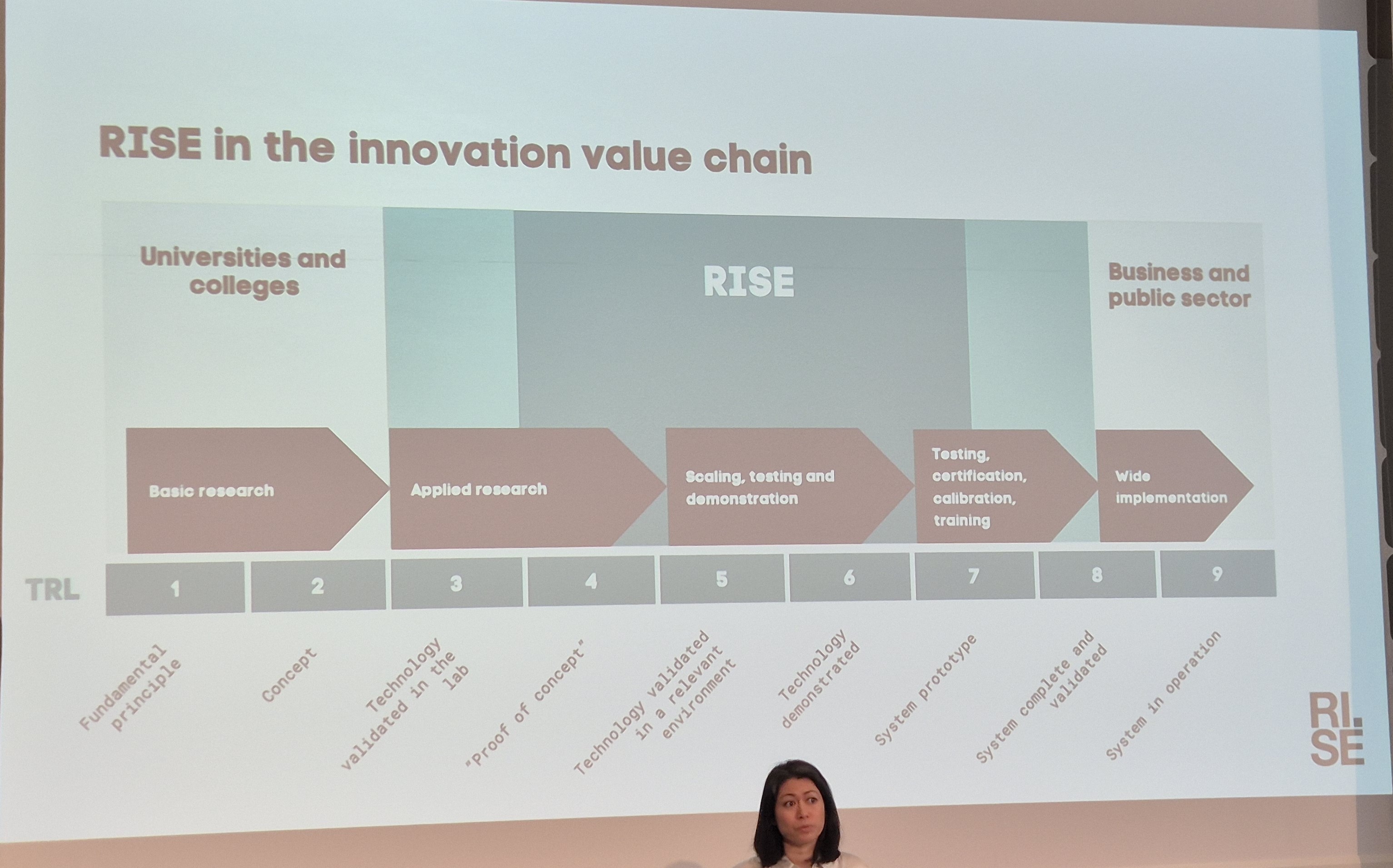
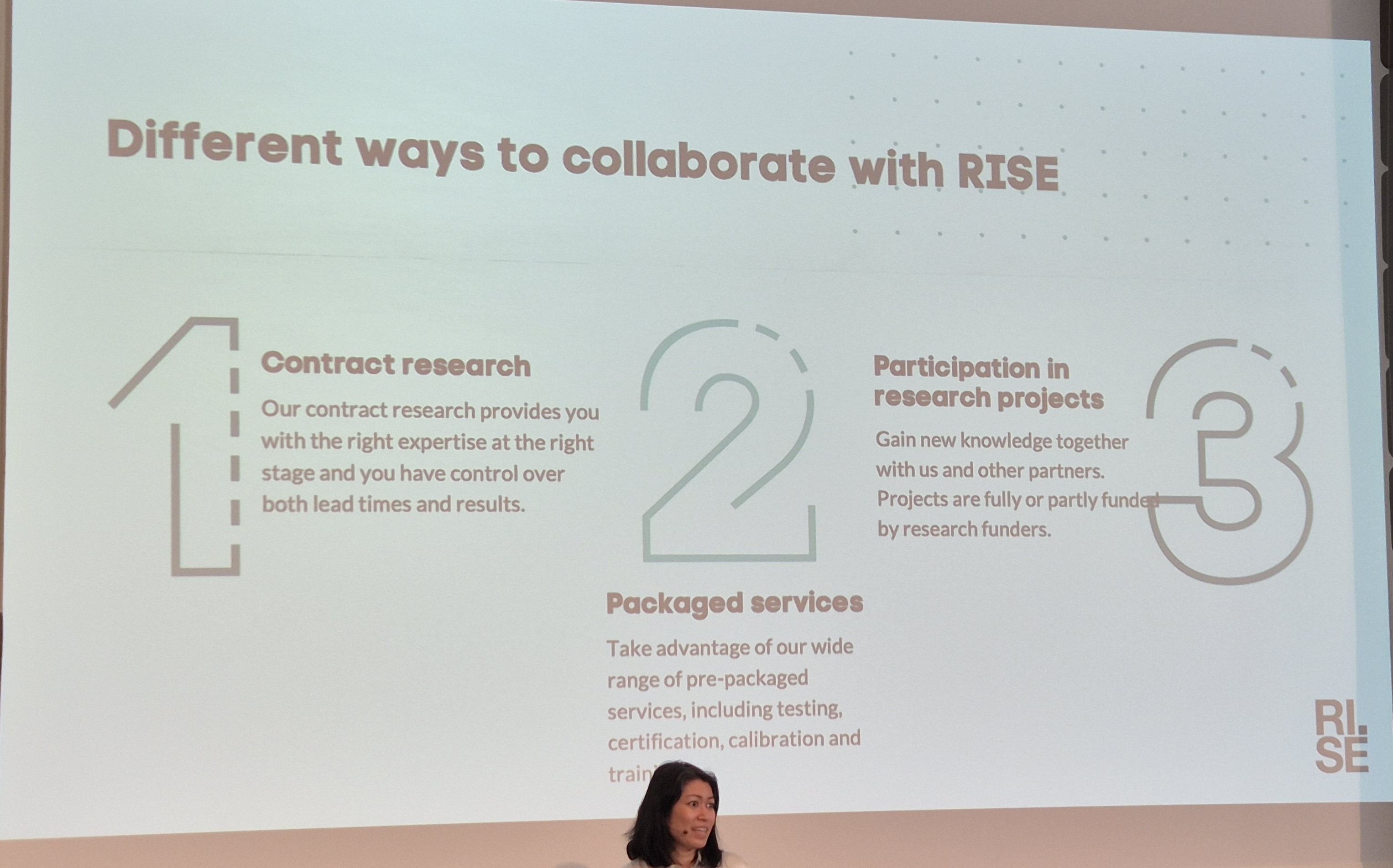
RISE supports applied research and scales innovations from lab experiments to real-world solutions, covering Technology Readiness Levels (TRL) 3 to 8. Through services like testing, certification, and training, it helps both public and private sectors bring technologies to life. Collaboration models include contract research, externally funded projects, and packaged services.
The Evolving Data Centre: Power, Cooling, and Sustainable Infrastructure
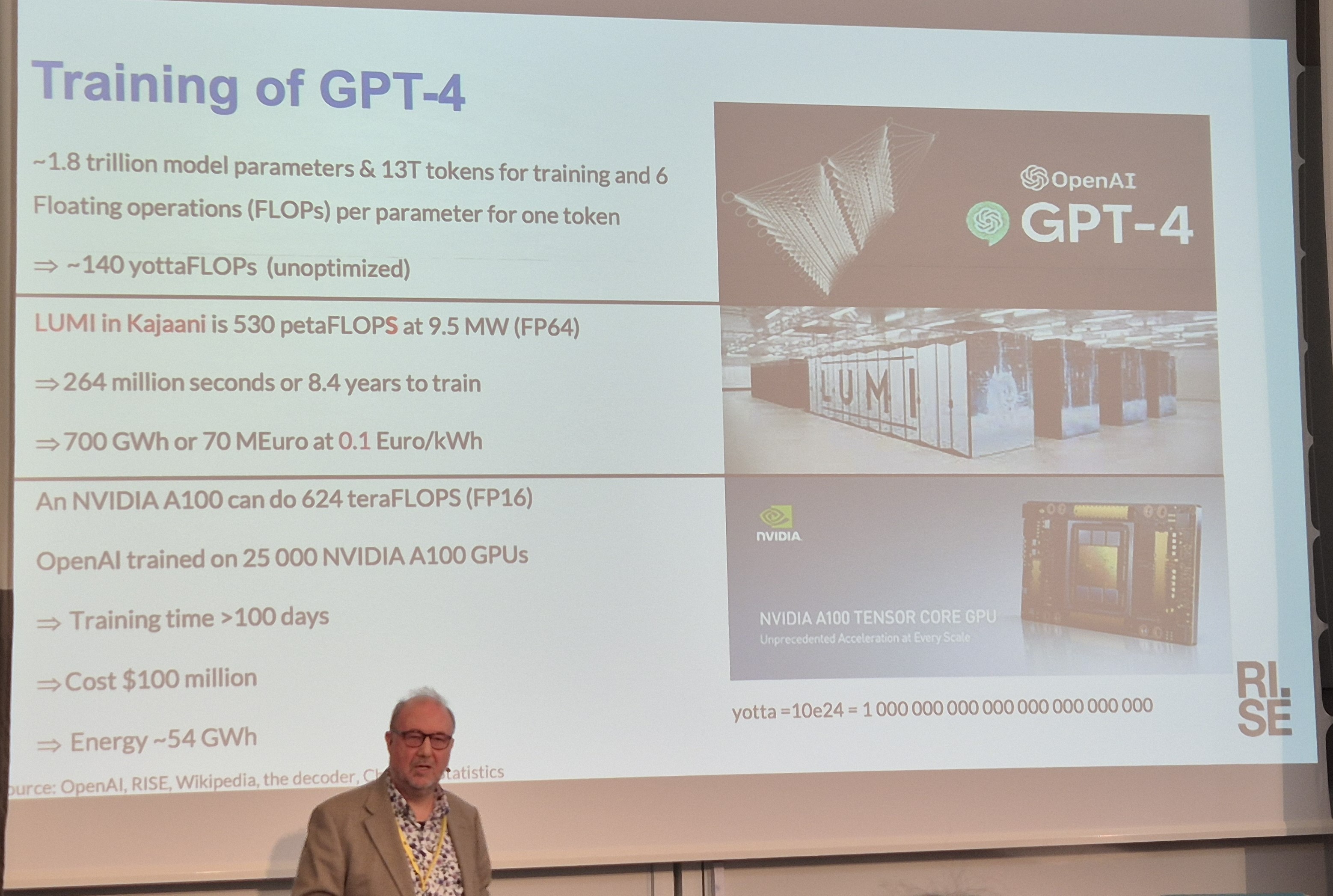
Dr Summers, Scientific Lead in Data Centres at RISE, delivered a brilliant talk that really made me think. What truly made this AI boom possible? Was it data? Algorithms? Those have been around for decades. The real enabler, he argued, is infrastructure.
He illustrated this with a compelling example: training GPT-4 on Sweden’s LUMI supercomputer would take 8.4 years and consume 700 GWh of energy. Yet OpenAI did it in just over 100 days—highlighting the importance of compute infrastructure. He also touched on power efficiency and how liquid cooling is becoming essential in modern data centres. Eye-opening stuff.
Intelligence is Corporeal: When AI Interacts with Our Bodies
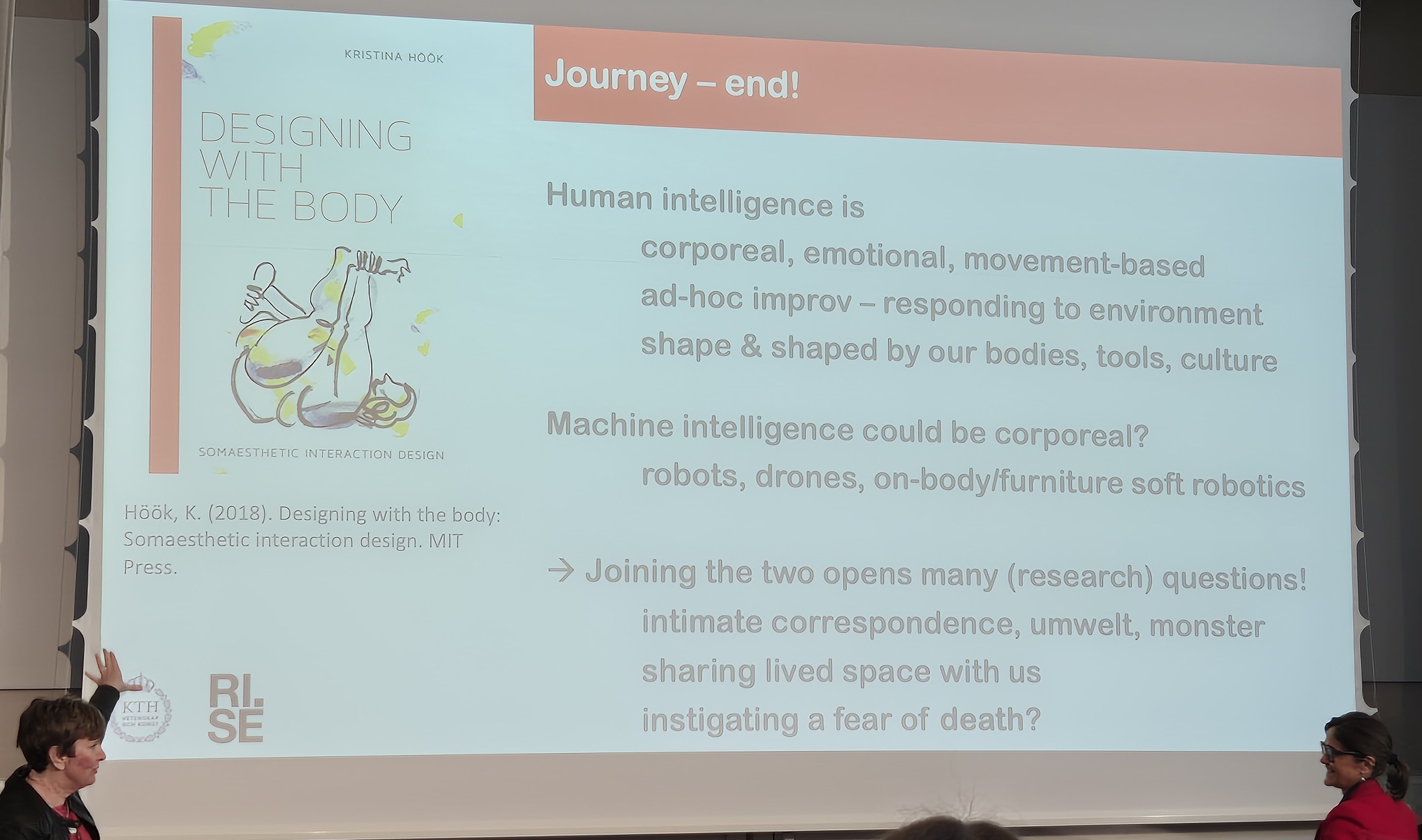
This talk was one of my favourites—Kristina, a professor at KTH, introduced the idea that intelligence is corporeal, a concept grounded in the body. She quoted feminist thinker Donna Haraway to set the tone:
“Intelligence is corporeal.”
She started with animal intelligence, such as the movements of a caterpillar, then transitioned to human intelligence as something deeply embodied: emotional, improvisational, movement-based.
Her insight that “movement is primary, language is secondary” was striking. It felt like she was inviting us to open a new door to understanding intelligence. She shared fascinating work in soft robotics, drones, and wearable tech, raising bold questions about the interface between human and machine intelligence.
For those interested in learning more about Kristina Höök’s fascinating work on corporeal intelligence, you can watch her TEDx talk here.
To the Stars: AI in Space
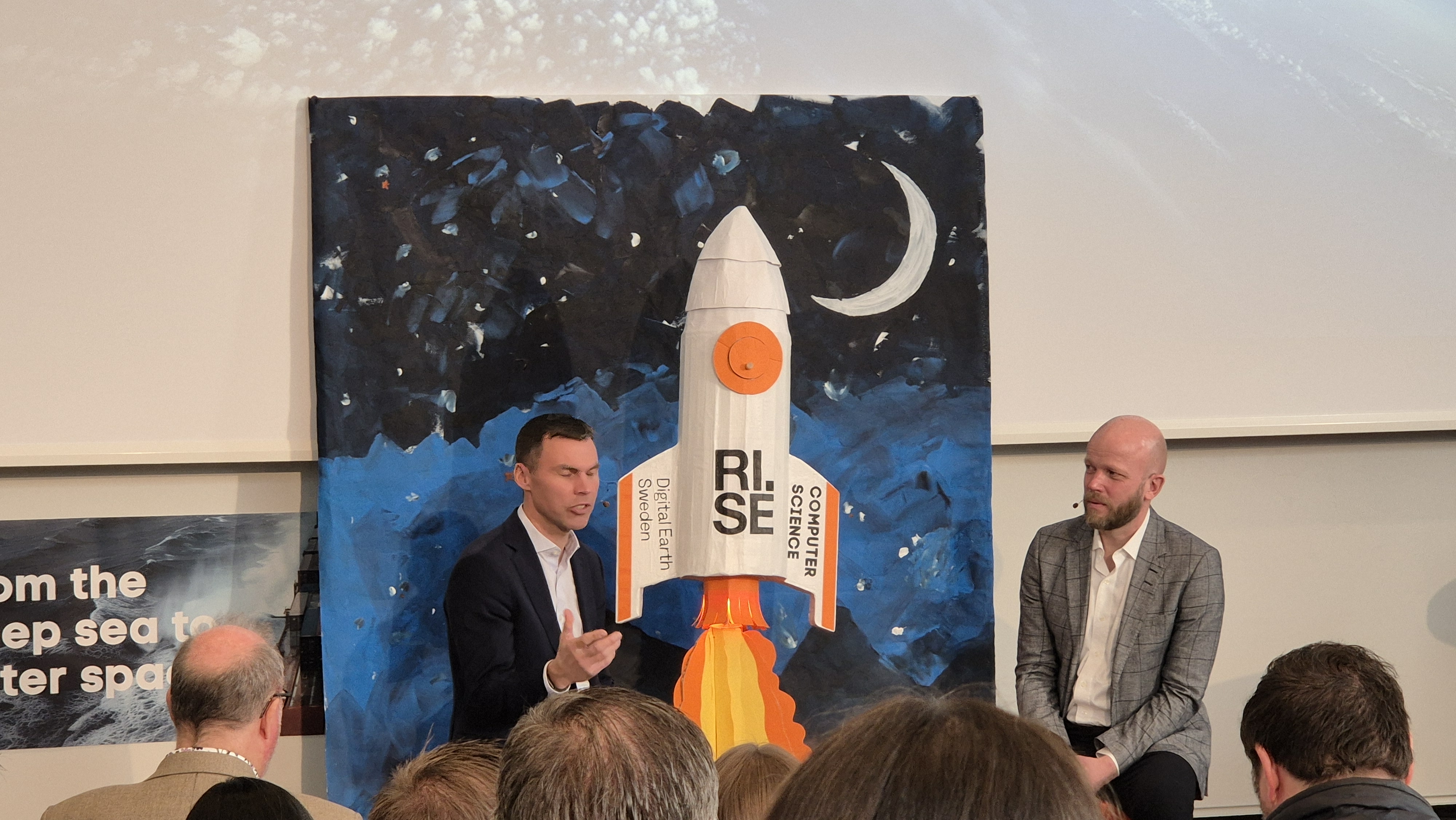
Meeting Marcus, an astronaut with the European Space Agency and Chief Innovation Officer at Saab, was a surreal experience. He shared how seeing Earth from outside changed his worldview—something I can only imagine.
What really stood out was his interest in using AI in space. Not just for the sake of technology, but with a careful eye on the uncertainties that space environments bring. Tobias, a unit manager at RISE, complemented this by discussing the challenges and opportunities of integrating AI into space technologies. It was a thoughtful and grounded perspective on a high-tech frontier.
Poster Session
One of the most engaging parts of the day was the rapid-fire poster pitches. Each researcher had just 2 minutes to present, which made it dynamic and exciting. In a short span, I got a broad view of diverse research topics—and some of them really caught my attention. Here are some posters which I found interesting
Predictive maintenance
Predictive maintenance is something I often come across in the automotive sector. What fascinated me here was how it expanded into related areas like federated learning, edge processing, and explainability. It really showed how broad and dynamic this field has become.
Swedish Language Dataset
I found this dataset really valuable—it helps evaluate LLMs in Swedish without the bias introduced by translation. Evaluating models in native languages is something I think is critical for fair and accurate AI systems.
Investigating LLM
I was genuinely happy to see this! The research dives into real-world challenges of deploying LLMs in production—something we often overlook when focusing purely on capabilities. Very relevant and thought-provoking.
Contiki-NG OS
This one immediately caught my attention. In automotive production, IoT devices are usually resource-constrained. An open-source OS like Contiki-NG, designed with low-power wireless communication in mind, felt like a perfect fit for such environments.
LLM + GNN
Graphs always seem to pop up when discussing LLMs, but this study really brought the two together—GNNs and LLMs—into a single framework. It was fascinating to see how the combination improved performance.
Connected vehicles security
With vehicles evolving into complex cyber-physical systems, cybersecurity becomes a pressing concern. This study tackled that head-on with practical solutions. It felt timely and very much on point.
Curling Analytics
This was such a fun one! As someone who works with pose estimation, it was cool to see it applied in the context of curling. A great example of how versatile this technology can be.
Online learning
We all learn about backpropagation early on in deep learning, but this study introduced a twist—layer-wise backpropagation. It was an interesting take and gave me something new to think about.
MCP
MCP was definitely a buzzword at the event. The demo showed how you could control devices using natural language—it was simple, effective, and opened up so many application ideas.
Candy robot
This demo really showed the power of multi-modal LLMs. Watching a robot understand and respond in real-time was both entertaining and inspiring. A perfect way to round off the session!
I really enjoyed being at the RISE Open House 2025. The talks and conversations were full of energy, and I left feeling inspired.

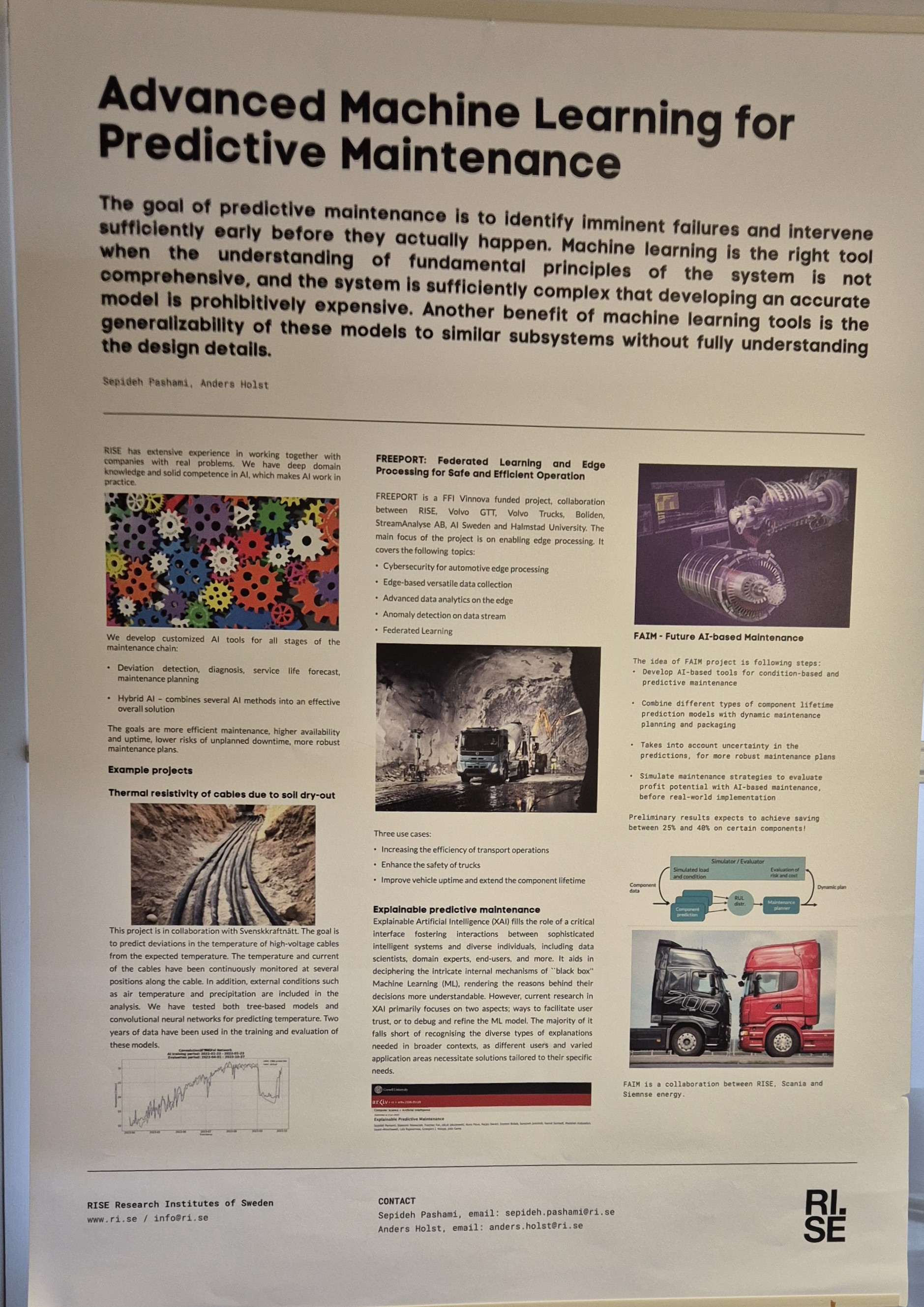



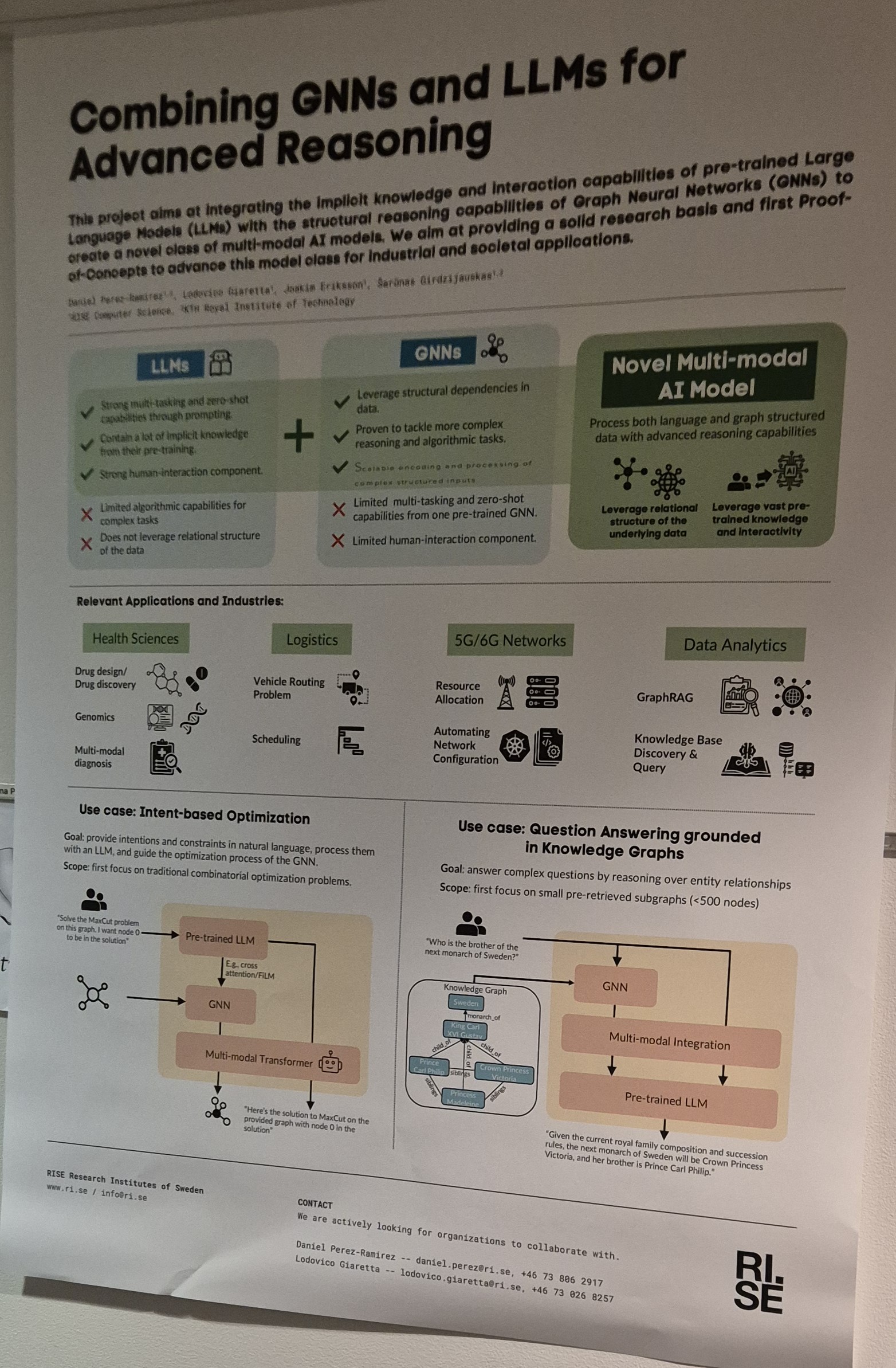

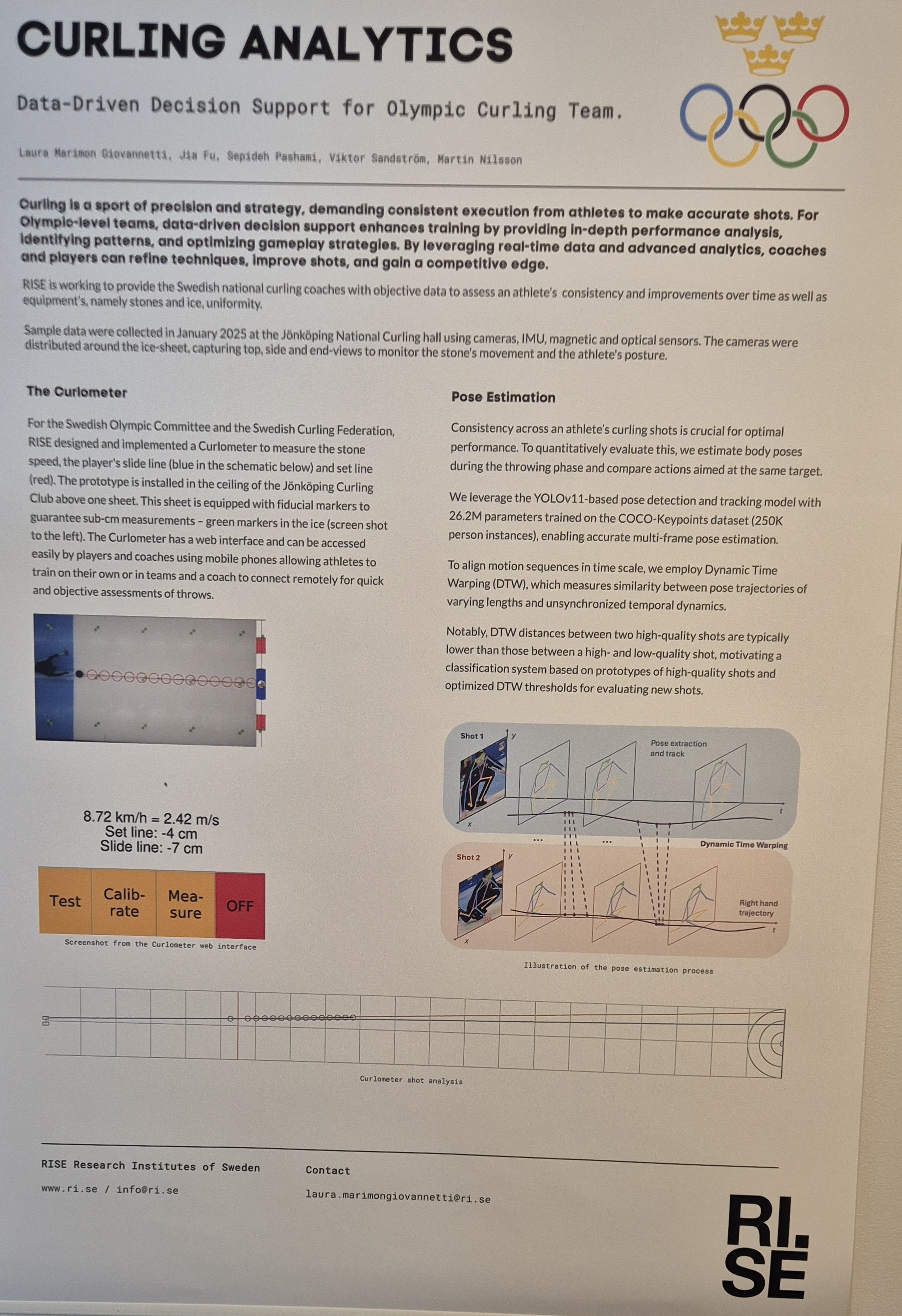
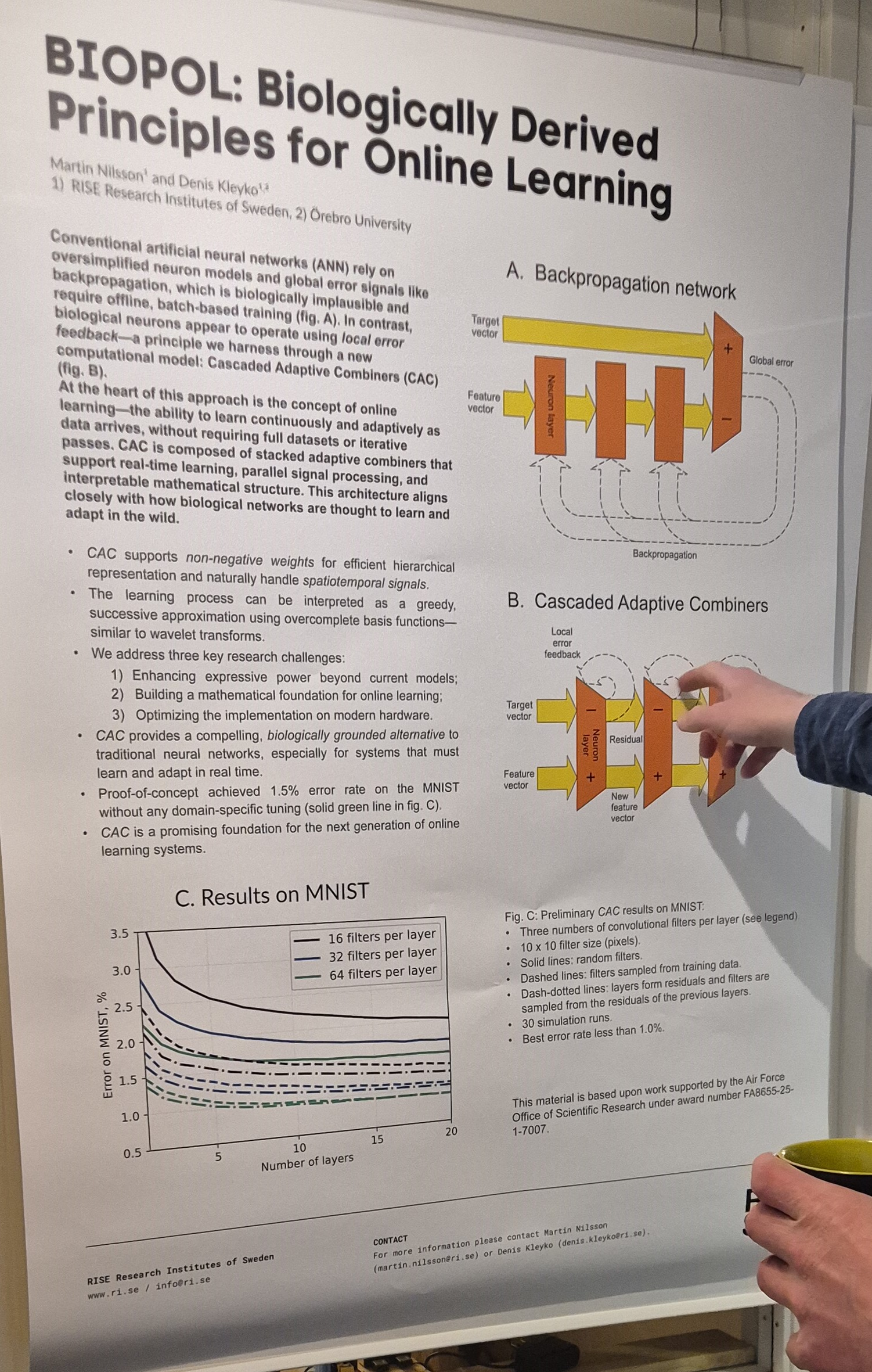
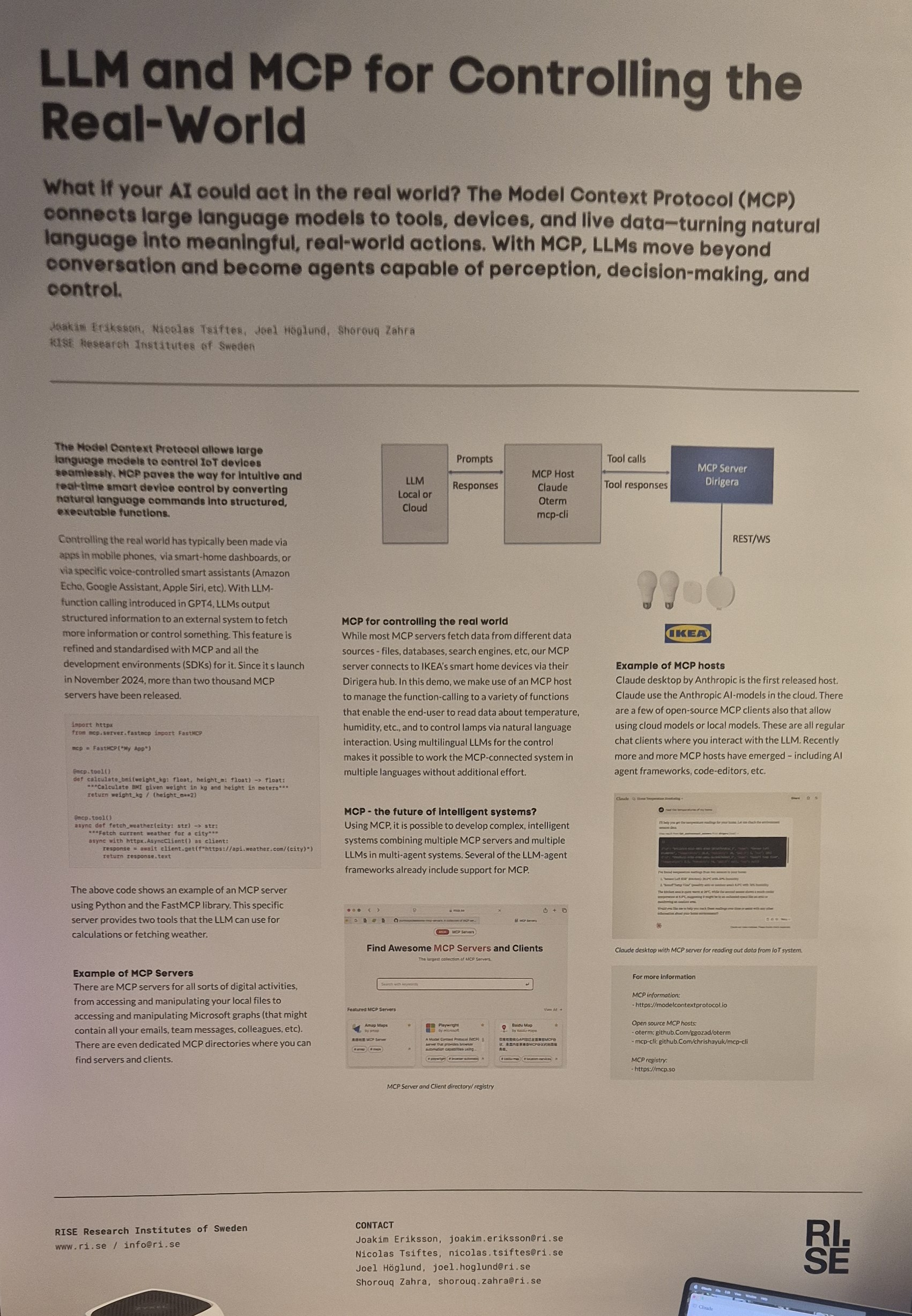


Leave a comment